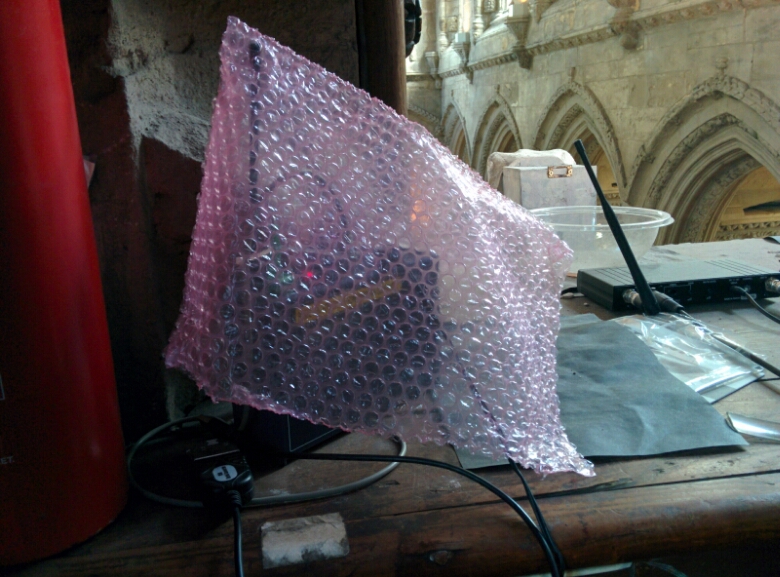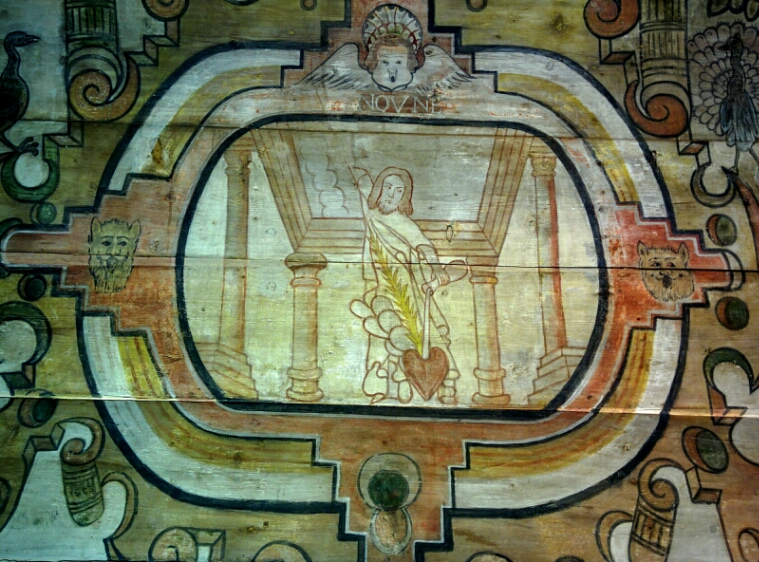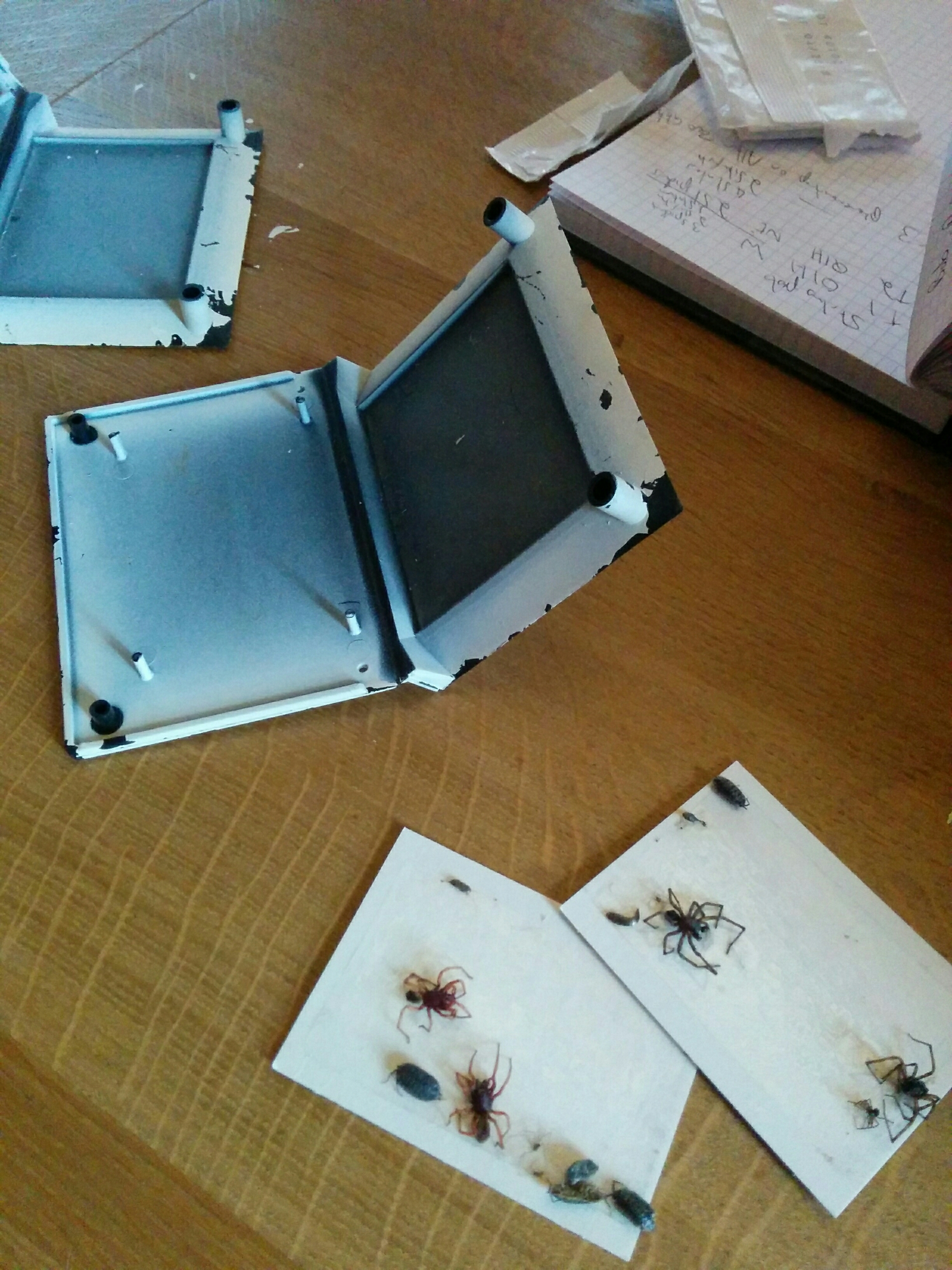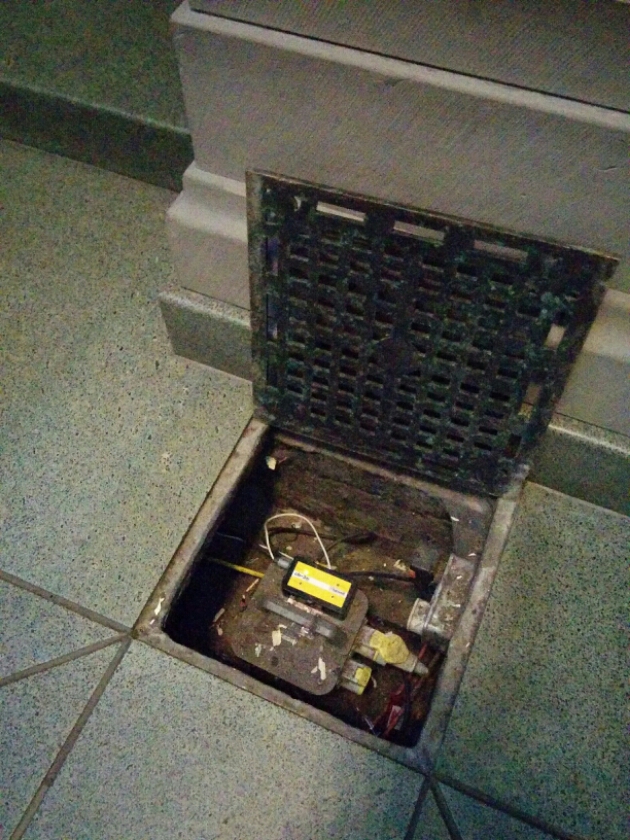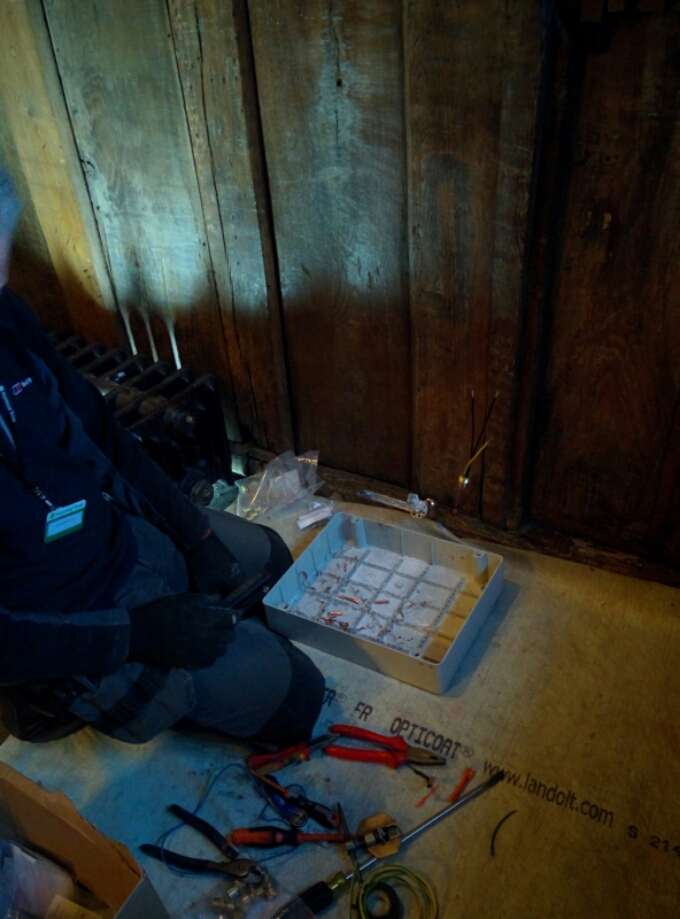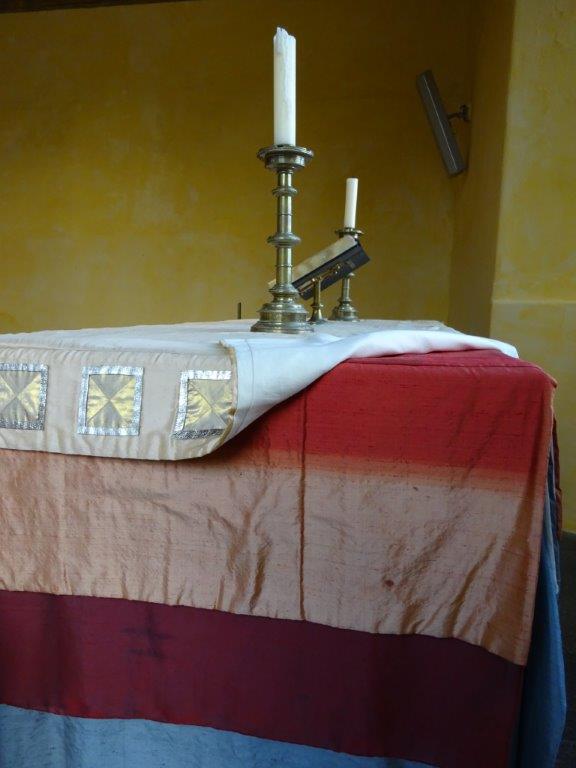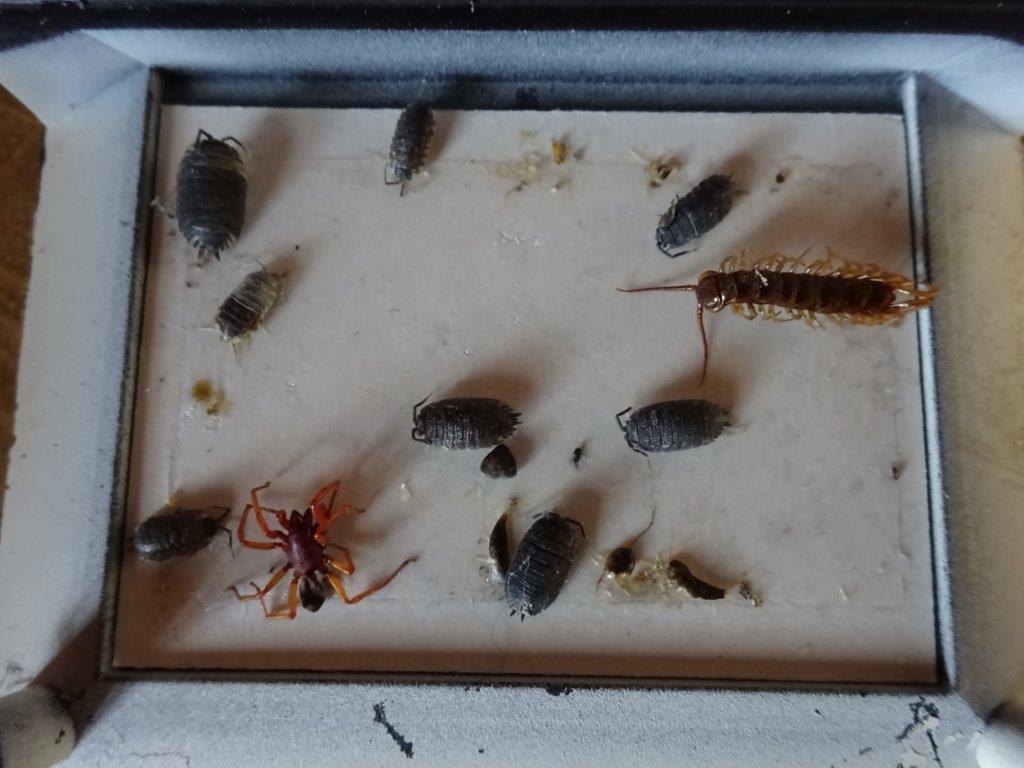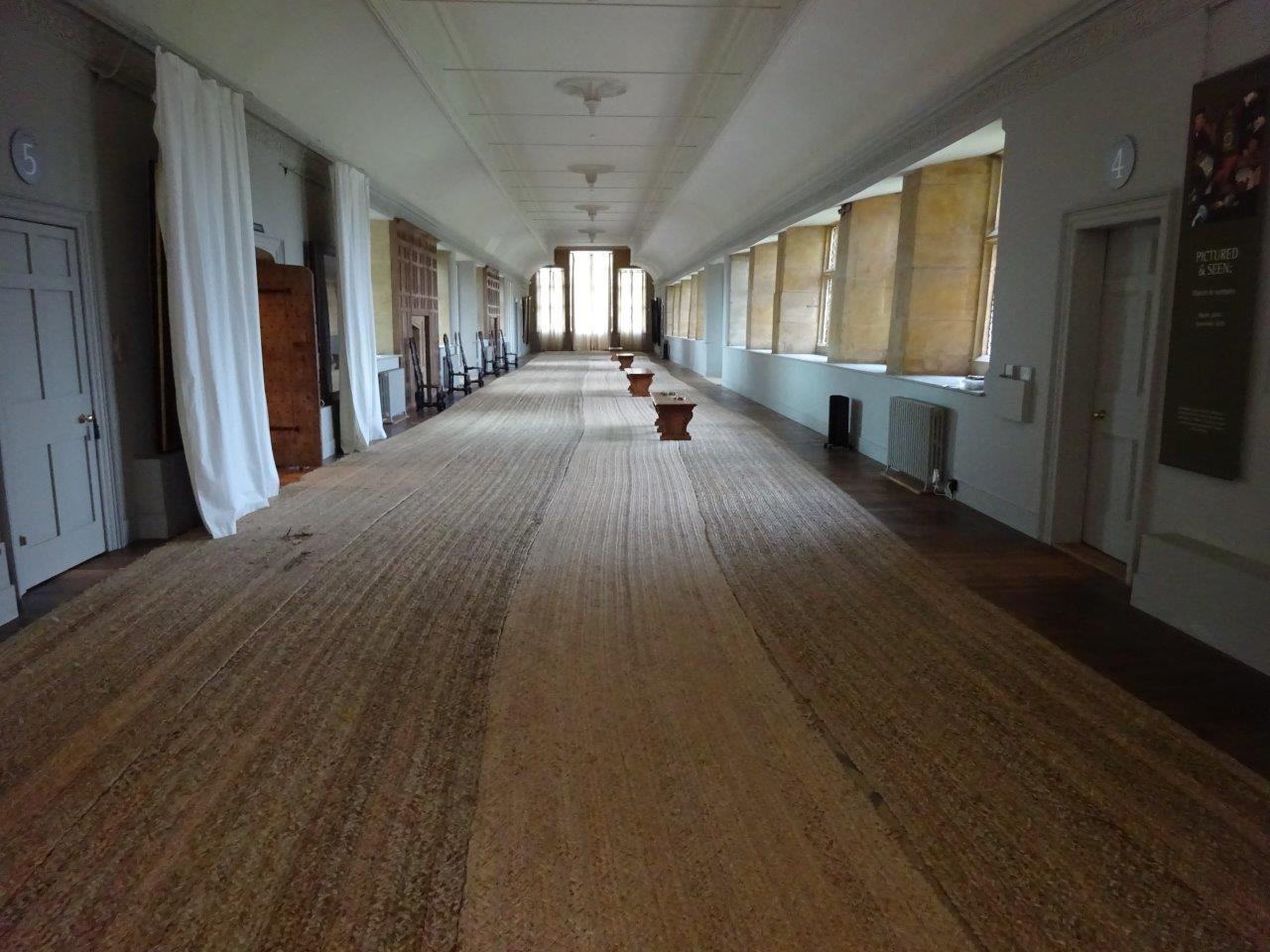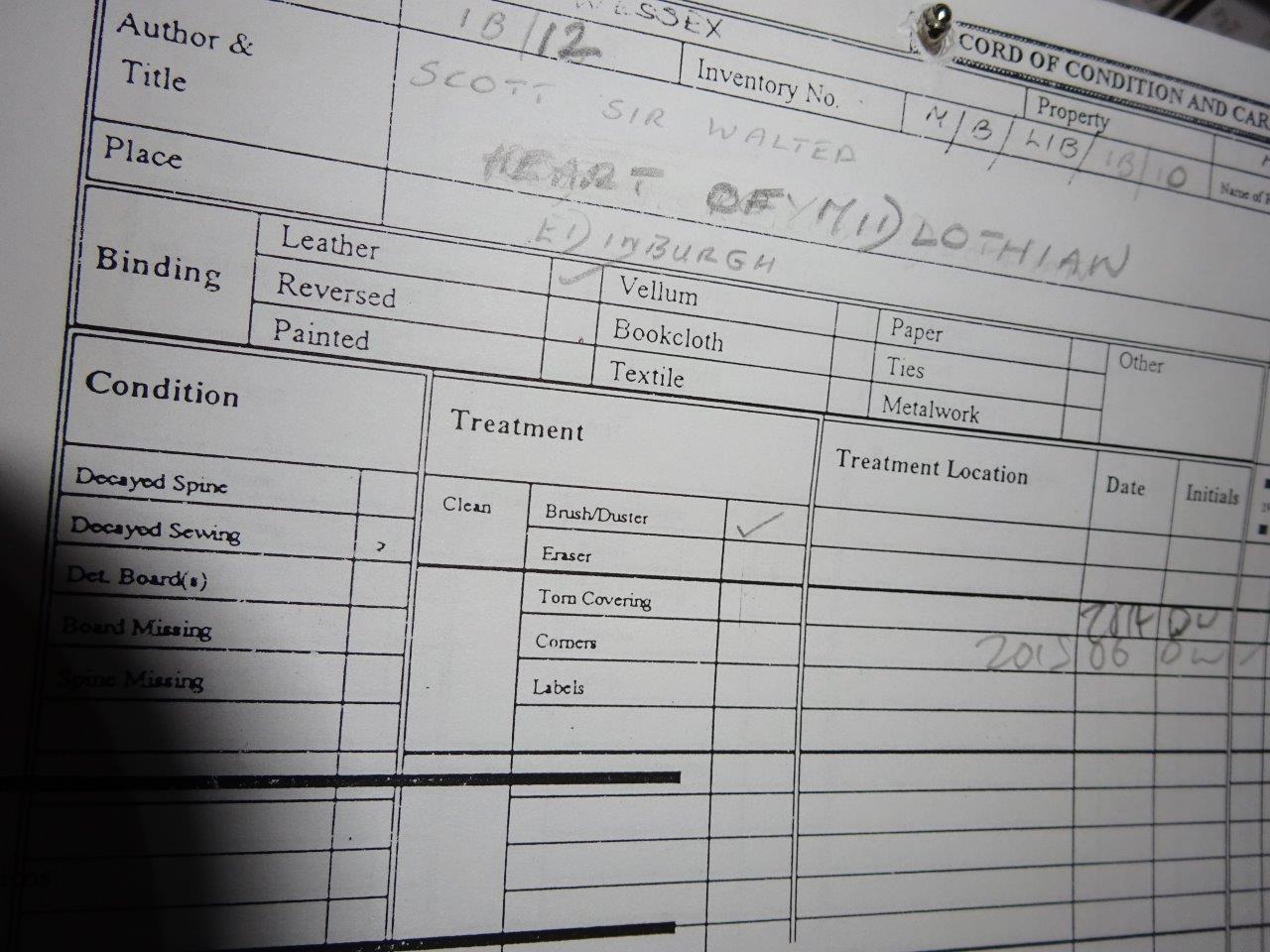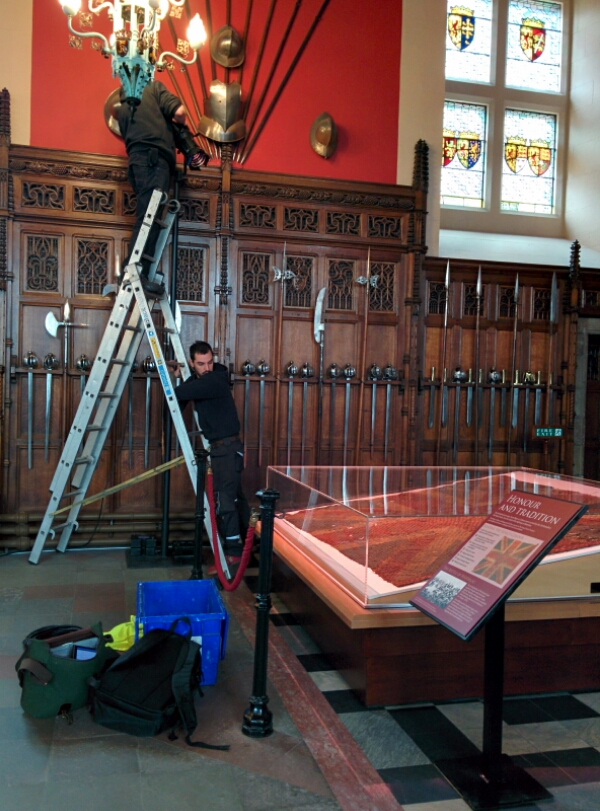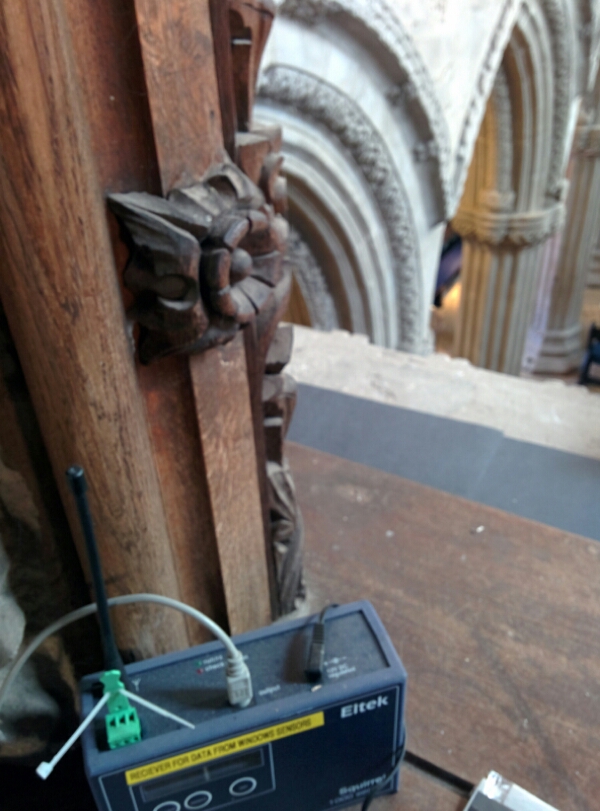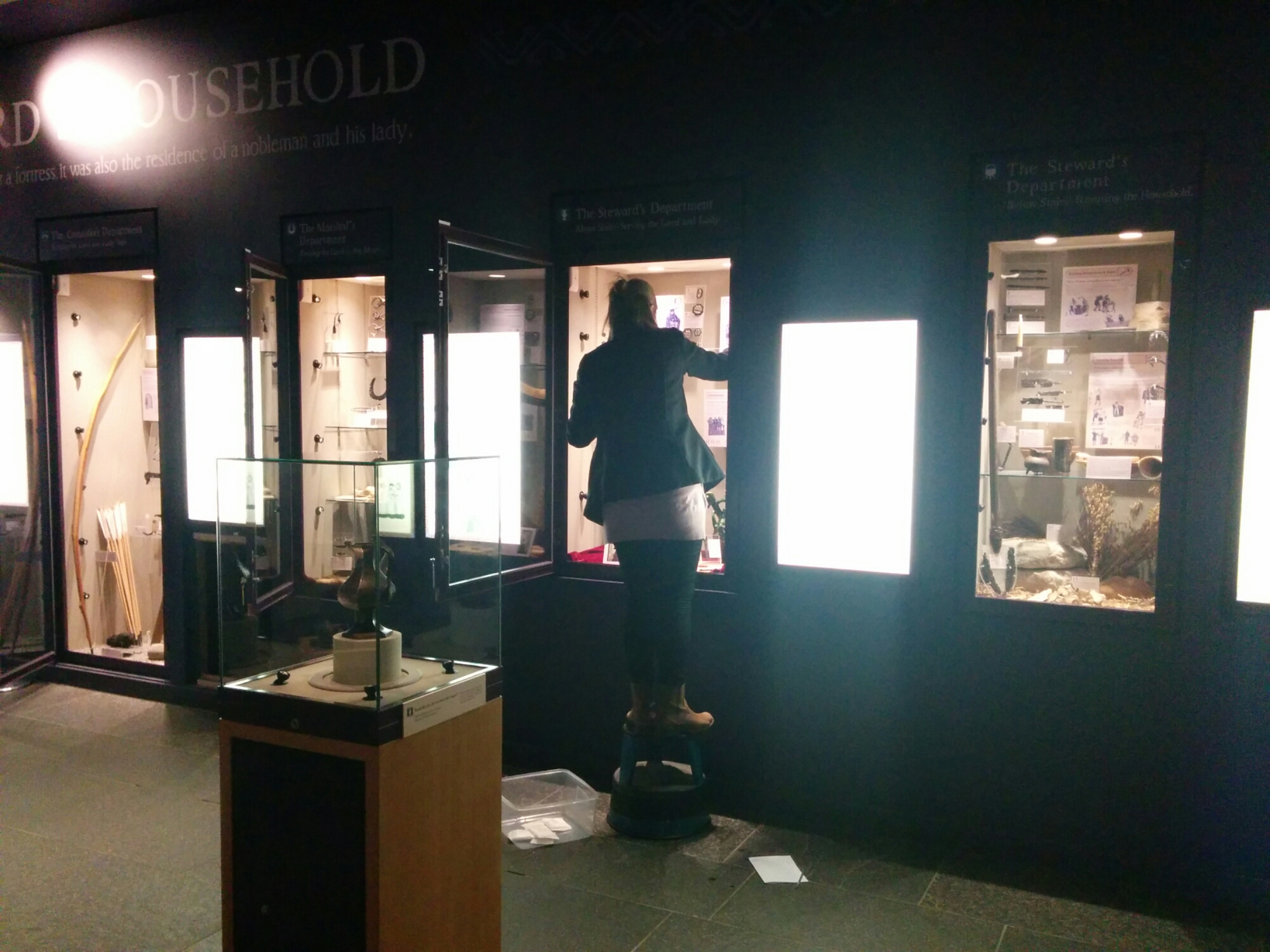The data logger under the pink bubble wrap got soaked by a small leak in the church roof last winter. It needed a replacement circuit board to get it back up and running. The bubble wrap that the logger came back in should prevent further damage while the leak is being repointed.
Author Archives: admin
Painted Panelling
Traditional Scottish panelling like this is vulnerable to attack from woodworm and from timber rot if conditions are not right. There is also the more subtle effect of flaking paint as well as cracking and splitting of the wood. A humidity sensor in the chapel controls the heating to prevent these problems from happening.
Pest Traps
Sticky pest traps catch all manner of insects when put out in an old building. Here we have caught regular spiders, slater spiders and slaters. None of these are pest species. It’s a shame to catch these spiders as they predate on some potential pests but there is no other reliable way to get early warning of a pest infestation. Early detection is key to successful and economical treatment of a pest problem.
Adapted Conservation Heating
This small box, buried in the floor under a grille, is the receiver and switch that controls a large boiler in a monument in Edinburgh. This brings the heating on when the air gets too damp and so prevents mould and similar problems. The box receives a wireless signal from a Hanwell data logger elsewhere in the monument. The system works pretty well but can get a little overwhelmed by large numbers of visitors in wet coats. It can take a while for the heating to counteract this sudden load of moisture in the air. There is a small twist on normal conservation heating as a minimum temperature of 14 degrees has been set to keep the building slightly warm.
Rewiring
Light Fading
The whole cover of this altar used to be a strong red. Sunlight through the south facing window has faded much of it to a light pink. The top altar cloth has protected some of it and shows how dramatic the fading has been. Ultraviolet filters on the glass or blinds would have helped but in this instance it’s probably more sensible to replace the altar cloth once in a while.
8 Slaters, 3 Silverfish, a Centipede and a Slater Spider
This sticky trap looks pretty full but given that it’s from a castle and out has been in place for a few months, it’s probably OK. The Slaters (Woodlice) aren’t usually a problem and nor are the Silverfish except when there are delicate things around like old wallpaper or other paper. The Slater spider (apparently these both jump and bite) and the Centipede (or is it a millipede?) have come into the trap thinking that that are about to get an easy meal. This catching of the predators of pest species is far from ideal. As well as being unfair, these predators would have been doing our job for us, had we not killed them. The trouble is that we need to have early warning of real pest species and this is the only way to do it.
Watering The Carpet
The rush carpet in this house used to be (maybe 10+ years ago) watered every day in the winter with a watering can. This was to keep relative humidity levels up and so prevent wooden furniture from cracking and splitting.
All this moisture will probably have found its way to other parts of the building where it could cause problems. The current system of radiators controlled by a humidistat provides a much better solution.
Library checking & cleaning
Light Levels
These 200 year old textiles are going on display for the first time in a long time. They need to be protected against further deterioration. We tested the case and found that it did not allow ultraviolet light through to the most damaging light was not an issue. Some trial and error with the spotlights found a power setting that allowed the textiles to be seen but also kept within a set light budget of below 100,000 lux hours per year equivalent.
Church Heating for Conservation
The biomass boiler that heats this church has an effect on the people that use and visit the church but also on the stained glass windows that we are investigating.
A year long monitoring programme, using Eltek equipment, is collecting environmental data inside and outside with a view to finding the best way to heat the building – keeping it comfortable for users and preserving the windows.
Batteries, Silica Gel, Calibration
This highlands museum often sees very cold weather in the winter. This can cause low relative humidity for the objects in the display cases. For this reason, used silica gel had been hidden in the cases. This should slowly release moisture and prevent very low relative humidity. This is done at the same time as checking the accuracy of the Meaco sensors and changing their batteries.

